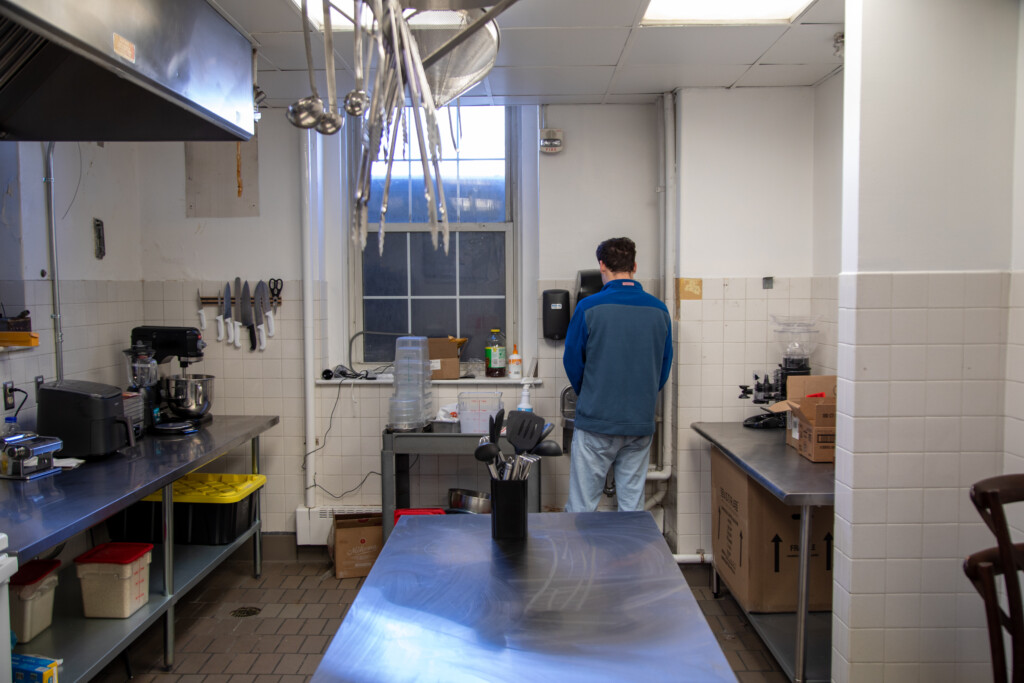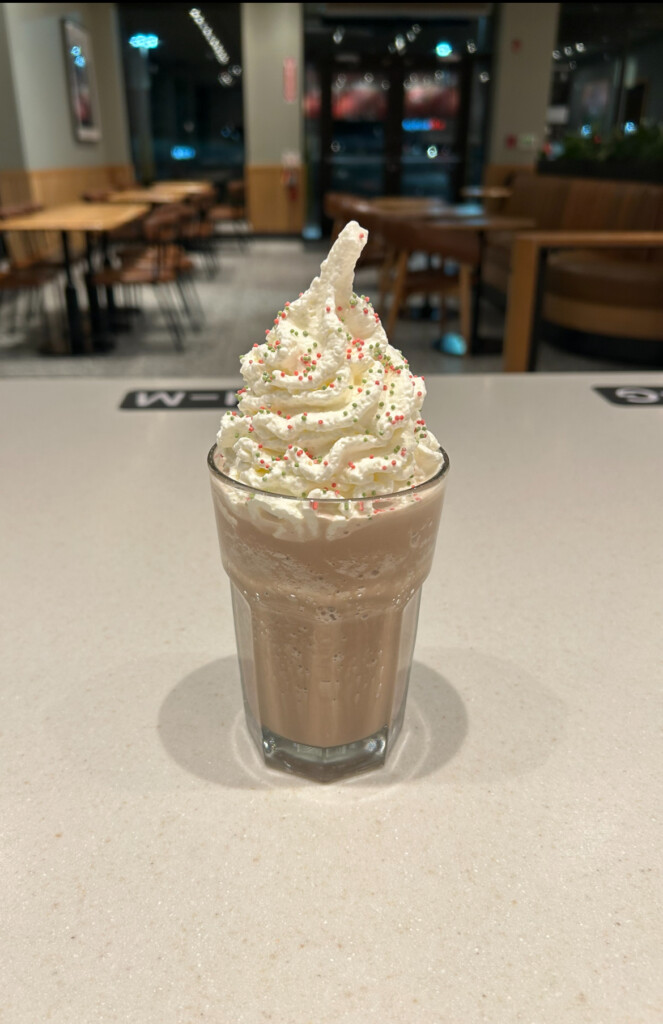
The Memorial Art Gallery will soon begin constructing a sculpture park on its grounds. Courtesy of Terminartors.com
The Memorial Art Gallery on University Avenue houses many great works of art, ranging from three Monet paintings to a suit of etched armor, fashioned in 16th century Germany.
Since as far back as 2001, though, there has been correspondence about the possibility of developing the grounds. About three years ago, communications truly got underway, discussing the possible construction of a community garden — what MAG is calling a centennial sculpture park. It will honor the gallery’s 100th anniversary in October 2013, when the park will hopefully be open to the public.
The grounds of MAG have been in need of an overhaul for years now. There are over 17 acres of land available to the gallery, which is a lot of space, considering its urban location.
“Our internal ideas [were] that we wanted to have our grounds be populated with more sculpture,” Chief Curator Marjorie Searl expressed.
About four or five years ago the gallery got its chance. At the time, the city of Rochester was discussing possible ways to continue funding the ARTWalk project, “a permanent outdoor art trail…[devised as] a plan to revive the area,” according to the project’s website. It was crafted just one block east of the gallery.
MAG jumped at the thought that this would be a fantastic collaborative opportunity.
“If we were ever going to do this, now [was] the time,” Searl explained.
The gallery met with city representatives who got equally excited about the plans that were in the works, and MAG arranged an easement with the city, temporarily transferring control of the grounds to them so that they would be publically accessible. The plans continued to progress as MAG began to work with architects, engineers and the ARTWalk organization, as well as have meetings open to the public.
This park will be much more than just the defecating dogs and fanatical runners that appear in most city parks though. The majority of the grounds will be reserved for outdoor sculptures, some of which are presently displayed inside the gallery, but were always meant to be outside, as well as commissioned works by major national and international figures in the art community.
Work from artist Tom Otterness, who has had his work displayed in many other public locations, such as the 14th Street subway station in Manhattan, will occupy the majority of the space.
“We…wanted somebody whose work would be engaging to the average person,” Searl said. “We wanted somebody who would be family friendly so that people would say…let’s go down and see that sculpture.”
The longevity of this project was also considered when selecting an artist.
“Otterness has had to connect to…[MAG], its mission, its sensibilities and its needs, and he will have to maintain those connections as the construction and installation occur,” Allen Topolski, Associate Professor of Art and Art History, as well as a member of the selection committee for the project, said.
Otterness’ work to be displayed in the park, which as a collective he has named “Creation Myth,” will include two large sculptures of a man and woman which will form a gate-like design for visitors to walk through, aswell as unfinished sculptures strewn upon the ground as a more humorous take on the artistic process.
There will also be a sitting area fashioned out of the kinds of stone that the statues are made of, as if to imply the origin of the sculptures, as well as smaller bronze figures that will be meant to represent artists’ assistants. It will be a mix of the very large and the very small.
Works will also be installed from artists Deborah Butterfield, George Rickey, Tony Smith and Albert Paley.
In addition to the many sculptures to be showcased in the park, many pathways are also being designed by artist Jackie Ferrara, who also has had her work featured throughout the country. These geometric, abstract pathways will include morse code shaped into patterns and designs, and a color path that will have the names of colors spelled out in morse code. By happy coincidence, Emily S. Watson, MAG’s founder, inherited her wealth from her father, who founded Western Union — the company that built the first transcontinental telegraph line.
The construction of the park will be split into three phases. The first phase will include installing the first groups of sculptures, moving certain sculptures that now reside inside MAG outside and completing some of the pathways going from the main entrance of the gallery towards Goodman Street. The second phase will focus on acquiring more sculptures to put into the area near Prince Street and the School of the Arts and developing more pathways. The final phase will focus on developing back areas.
In the past, MAG has usually acquired art that is already made, rather than commissioning works, making this sculpture park their first major commission. This will introduce an interesting new element into the acquisition process.
“In this case you’re acquiring an idea,” Searl explained. “You don’t know how it’s going to turn out until it’s done.”
The original idea of the park stems from a goal for community.
“I think the goal of the city…and the gallery are fairly consistent,” Searl noted. “I think the idea is that one of the ways that you can build community is through the presence of art in the community…I think that one thing we [were] always interested in doing [was] having the gallery be more of a destination for people.”
MAG director Grant Holcomb has a similar view on this community objective to make MAG more welcoming.
“I think there were two [goals]. One was to open the gallery to the community, literally by taking down the fence [around the gallery] and figuratively by engaging the community,” he said.
The fact that this was meant to be a community-centered project can be seen in the sculptures themselves.
“On the practical end of things, the art needs to hold up to being exposed — to the weather, to vandalism and to time,” Topolski noted. “Most important[ly] though it needs to be engaging.”
This concept can be seen in the artwork that has been chosen, which Searl calls “community friendly.”
This is by no means a small project. MAG plans to break ground this coming summer, and finish the first phase of the project by the fall of 2012.
The sculptures that will appear in the park are being gathered with funding designated specifically for the acquisition, made available by endowment funds. MAG also applied for a grant from the National Endowment for the Arts, and was one of a very small number of cities to receive funding — a huge accomplishment, given that Rochester is not usually a recipient of these kinds of rewards. Money is also coming in from the city, as well as the community, corporations and individuals.
Planning a project of this sort is always difficult, and the going hasn’t been perfectly smooth, although it appearsthat there haven’t been any true disasters.
“I think that there will always be differences of opinions about the scope of a project like this,” Searl noted. “[It’s] interesting how you bring different philosophies together…people tend to view things from different perspectives…[It’s] a lot of trying to satisfy all the stakeholders.”
Holcomb is optimistic about any disparities that may have occurured.
“They’re not pitfalls,” he said. “They’re issues of coordination and communication.”
There is also optimism that the sculpture park will positively affect UR. Searl observed that Topolski hoped that the art that was selected would be work that he would be interested in sending students to MAG to see.
Creating public art is no easy endeavor, but this new park will hopefully rise to the task.
“The largest challenge to public art is making it please everyone without offending anyone, while not [making it] boring [to] all involved — a lot of public art is so safe that it becomes generic… Otterness’s work will not hide behind elitist approaches — it will assert itself in scale, engage through narrative and relate to everyone.”
Holcomb is confident about the functionality of the centennial sculpture park.
“I think the grounds will be used much more… they will be very conducive to gatherings,” Holcomb said.
Goldin is a member of
the class of 2013.


